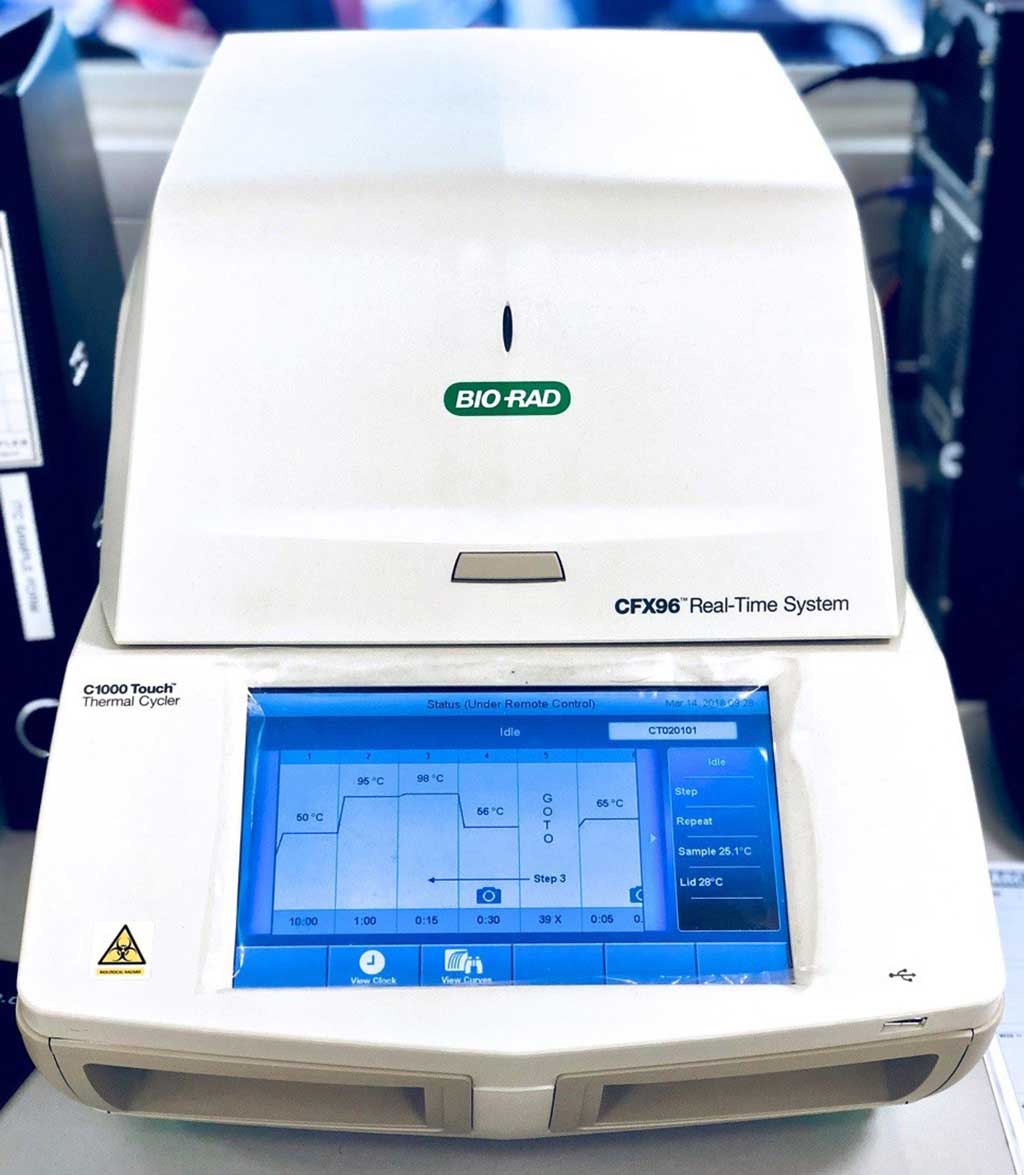Streamlined Assay Improves Prenatal Detection of Alpha-Thalassemia
By LabMedica International staff writers
Posted on 09 Jun 2020
Alpha-Thalassemia is a group of recessively inherited hemoglobin (Hb) disorders that result from decreased or absent synthesis of α-globin chains, affecting up to 5% of the world's population, mainly prevalent in the Mediterranean coastal countries, Southeast Asia, some African countries, and southern China.Posted on 09 Jun 2020
Thalassemia is a group of inherited blood disorders that reduces the ability of blood to circulate oxygen throughout the body. The severity can vary from benign to life threatening; therefore, it is important to identify infants as early as possible who may develop thalassemia-associated symptoms, as well as parents who are carriers. This requires the availability of practical and precise molecular diagnostic tools.

Image: The Bio-Rad CFX96 Real-Time PCR Platform (Photo courtesy of Nanyang Technological University).
Scientists at the Southern Medical University (Guangzhou, China) developed a rapid, accurate novel assay for non-deletional alpha-thalassemia genotyping based on one-step nested asymmetric polymerase chain reaction (PCR) melting curve analysis, which may enhance prenatal diagnosis, newborn screening, and large-scale population screening. To assess the assay for mass screening, 1,250 blood samples referred to their laboratory for the molecular diagnosis of α-thalassemia were randomly selected. The genomic DNA (gDNA) samples were extracted from peripheral blood lymphocytes using TIANamp Blood DNA Kit (TianGen Biotech Co, Ltd, Beijing, China). The assay was a one-step closed-tube genotyping method that involved nested asymmetric PCR and melting curve analysis running on a Bio-Rad CFX96 Real-Time PCR Platform (Bio-Rad, Hercules, CA, USA).
The investigators tested the ability of the new assay to detect five non-deletional alpha-thalassemia mutations. All five mutations were accurately identified with a concordance rate of 100% in a blind analysis of 255 samples with known genotypes, as determined by other analytic methods including gap-PCR, PCR-reverse dot blot (RDB), or Sanger sequencing. The investigators also tested the capability of the new assay to screen large populations. After testing 1,250 blood samples, the assay showed 100% sensitivity and specificity for all of the targeted mutations. The overall analysis time with the new assay was just under 2.5 hours. This is considerably faster than other molecular genetic testing methods, such as Sanger sequencing, which require 380 minutes, or RDB, which takes 300 minutes.
Wanjun Zhou, PhD, a medical geneticist and senior author of the study, said, “These other methods are unsuitable for use in large-scale screening programs because they have limitations such as cumbersome operation, low throughput, subjective interpretation, and possible laboratory contamination caused by post-PCR open-tube operation. Our results prove that this new assay is accurate, reliable, simple, and rapid and can meet the requirements for clinical diagnosis and mass screening of non-deletional alpha-thalassemia”.
The authors concluded that an assay of nested asymmetric PCR melting analysis for rapid and accurate genotyping of non-deletional α-thalassemia has been established, including the mutations of WS (HBA2: c.369C>G), QS (HBA2: c.377T>C), CS (HBA2: c.427T>C), CD30 (HBA2: c.91_93delGAG), and CD31 (HBA2: c. 95G>A). Moreover, the strategy of this study can effectively overcome the bottleneck of high homology and GC-rich secondary structure. The study was published on May 29, 2020 in The Journal of Molecular Diagnostics.
Related Links:
Southern Medical University
TianGen Biotech Co














